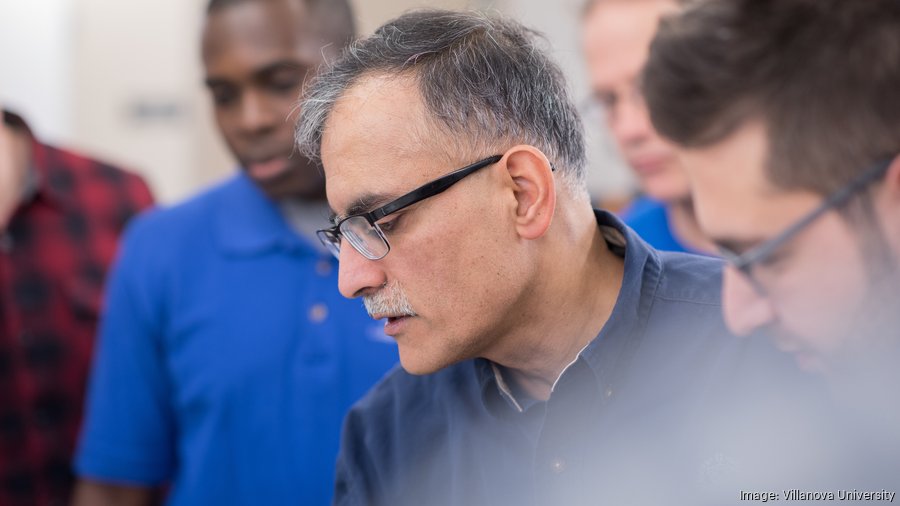Two initiatives, one by a startup medical device company in the Philadelphia suburbs and the other being led by a local university professor, are aiming to address the shortage of ventilators now in high demand by COVID-19 patients.
The Society of Critical Care Medicine has projected that during the pandemic as many as 960,000 coronavirus patients in the U.S. may need to be put on ventilators — but only about 200,000 currently exist.
X-Biomedical, a medtech company spun out of Children's Hospital of Philadelphia in 2017, has decided to temporarily shift its focus to producing low-cost ventilators.
Creating a similar product is also the goal of a team from Villanova University that is led by College of Engineering Professor C. Nataraj.
Nataraj said conversations he had with several physician friends who talked about the need for ventilators is what spurred him to lead the project. The conversations include one who talked about signing death certificates for COVID-19 patients who may have otherwise been helped had more ventilators been available.
"I figured some big company will come in and start making them but one of the doctors I was talking to said don't count on that," he said.
The Villanova team Nataraj assembled for the project — dubbed NovaVent — includes other engineering faculty members, along with graduate students from the university's engineering and nursing schools. They are working with medical experts from Children's Hospital of Philadelphia (CHOP) and Geisinger Health system, as well as industry professionals, to design, develop, test and validate a low-cost ventilator.
Their goal is to produce in large quantities a ventilator for less than $500 in part and under $1,000 per unit fully assembled and shipped.
"My sense is we are a couple of days way from having a full prototype that we are happy with in terms of the lab testing," Nataraj said.
Later this week, he said, the group will test their device on an artificial lung machine at CHOP.
The team is in conversations with the Pennsylvania Department of Community and Economic Development about engaging with a manufacturer in the state to actually make the ventilators. Nataraj said the department has informed him several companies are interested.
Their next steps are to perfect the device, test it and then seek regulatory approval this month. The FDA last week issued regulations governing the "emergency use" approval process for new ventilators to meet the growing demand for such devices.
"There are a lot of steps involved," he said. "Right now we have our device working in the lab."
Nataraj said the device purposely uses parts that are available in the U.S. supply chain at a low cost so the device can be produced in large quantities.
"It's not going to do everything a $50,000 ventilator does," he said, adding it is being designed to meet the needs of coronavirus patients as well as other patients in need of ventilators where the supply is limited. "My hope is that we never need this. My fear is if Philadelphia doesn't need it, other parts of the country or other parts of the world will. There's a bigger picture here."
In keeping with Villanova’s Augustinian mission, the engineering team will make the complete ventilator design publicly available to enable anyone to make the devices rapidly and with the same performance and reliability.
Not far from Villanova is Bryn Mawr-based X-Biomedical, a CHOP spinoff commercializing portable surgical visualization technology developed in labs at the pediatric medical center.
That mission has been put temporarily on hold.
Matthew Maltese, X-Biomedical's co-founder and chief innovation officer, said last month he and CEO Godfrey Nazareth both got the idea — independently and almost simultaneously — to use the company's resources and know-how to create a ventilator.
"We started with a blank sheet of paper, designing and building from the ground up," said Nazareth, who has amyotrophic lateral sclerosis that has impaired his ability to speak, in an email. "We went from an idea to now having a patent-pending fully functional prototype of our advanced, high-tech and low cost portable ventilator."
X-Biomedical has been working closely with ICU clinicians from CHOP as well as the University of Pennsylvania and Stanford University on the project.
The company has successfully completed a series of bench tests as well as multiple large animal studies, Maltese said.
"Our team is working together unbelievably well despite social distancing," Maltese said, noting the company has six employees and works with outside consultants and industry professionals. "All of them rallied around this concept."
The company will have to submit its ventilator to independent third-party testing before it could obtain approval to sell any.
"We all know it could be one of our loved ones or one of us on one of our ventilators," Maltese said. "So they have to be safe."
Godfrey's goal is to produce 1,000 ventilators beginning this month at a cost of less than $5,000 per unit beginning this month.
Maltese said the company is now working on submitting an "emergency use authorization" application to submit with the Food and Drug Administration. That process includes submitting a pre-emergency use application with the FDA, which allows the federal agency to let the company know whether it is on the right track.
"We draw our inspiration from two stories," Nazareth said. "First the story of the moon shot to put man on the moon. And second, the story of Kelly Johnson and his small team of engineers who in 1943 designed and built the first fighter jet, the XP-80, from concept to completed aircraft all in just 143 days."





